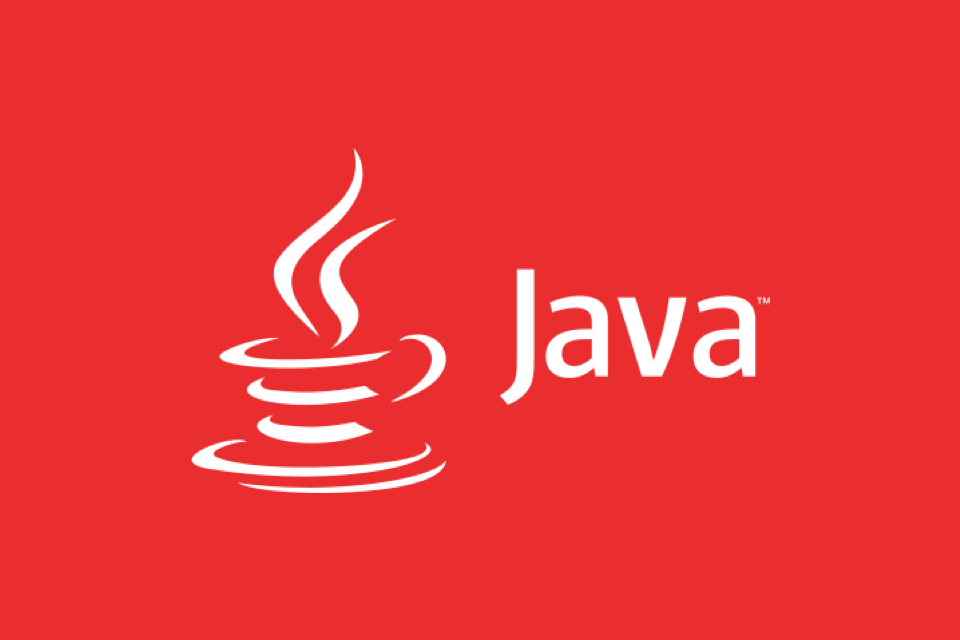Getting Started with gRPC in a Java Microservices Architecture
Jul 30, 2025 am 01:04 AMUse gRPC to improve Java microservice performance; 2. Define strong contracts through .proto files; 3. Configure gRPC dependencies with Maven and generate code; 4. Implement gRPC server logic; 5. Call services from the client; 6. TLS, error handling, service discovery and observability must be enabled in the production environment. Follow the steps to quickly build an efficient and type-safe microservice communication system.

So you're building a Java microservices architecture and want to use gRPC? Good choice. It's fast, efficient, and great for service-to-service communication — especially when you care about performance and contract clarity. Here's how to get started without getting overwhelmed.

Why gRPC Makes Sense for Java Microservices
Before diving into setup, it helps to know why gRPC fits well in a microservices environment:
- High performance : Uses HTTP/2 and binary serialization (Protocol Buffers), so it's faster and lighter than JSON over HTTP/1.1.
- Strong contracts : Service interfaces and message structures are defined in
.protofiles, making APIs explicit and language-agnostic. - Built-in code generation : You define your service once, and tools generate client and server code for Java (and other languages).
- Support for streaming : gRPC supports server streaming, client streaming, and bidedirectional streaming — useful for real-time or event-driven patterns.
If your services talk to each other a lot (eg, order service calling inventory service), gRPC can reduce latency and improve throughput.

Step 1: Define Your Service with Protocol Buffers
Start by writing a .proto file. This defines your data models and service interface.
Example: inventory.proto

syntax = "proto3";
package com.example.inventory;
service InventoryService {
rpc GetStock(StockRequest) returns (StockResponse);
}
message StockRequest {
string product_id = 1;
}
message StockResponse {
int32 available_count = 1;
} This defines a simple service that checks stock for a product. Keep your .proto files in a shared location or package if multiple services depend on them.
Step 2: Set Up gRPC in Your Java Project
Use Maven or Gradle. Here's a minimum Maven setup ( pom.xml ):
<dependencies>
<dependency>
<groupId>io.grpc</groupId>
<artifactId>grpc-netty-shaded</artifactId>
<version>1.58.0</version>
</dependency>
<dependency>
<groupId>io.grpc</groupId>
<artifactId>grpc-protobuf</artifactId>
<version>1.58.0</version>
</dependency>
<dependency>
<groupId>io.grpc</groupId>
<artifactId>grpc-stub</artifactId>
<version>1.58.0</version>
</dependency>
</dependencies>
<build>
<extensions>
<extension>
<groupId>kr.motd.maven</groupId>
<artifactId>os-maven-plugin</artifactId>
<version>1.7.1</version>
</extension>
</extensions>
<plugins>
<plugin>
<groupId>org.xolstice.maven.plugins</groupId>
<artifactId>protobuf-maven-plugin</artifactId>
<version>0.6.1</version>
<configuration>
<protoSourceRoot>${project.basedir}/src/main/proto</protoSourceRoot>
<outputDirectory>${project.build.directory}/generated-sources</outputDirectory>
<clearOutputDirectory>false</clearOutputDirectory>
</configuration>
<executions>
<execution>
<goals>
<goal>compile</goal>
<goal>compile-custom</goal>
</goals>
</execution>
</executions>
</plugin>
</plugins>
</build>After adding this, run:
mvn compile
The plugin generates Java classes from your .proto file — including service base classes, stubs, and message types.
Step 3: Implement the Server
Create a class that extends the generated InventoryServiceGrpc.InventoryServiceImplBase :
import io.grpc.Server;
import io.grpc.ServerBuilder;
import java.io.IOException;
public class InventoryServer {
private Server server;
public void start() throws IOException {
server = ServerBuilder.forPort(8080)
.addService(new InventoryServiceImpl())
.build()
.start();
System.out.println("Server started on port 8080");
Runtime.getRuntime().addShutdownHook(new Thread(() -> {
System.out.println("Shutting down gRPC server");
InventoryServer.this.stop();
}));
blockUntilShutdown();
}
private void blockUntilShutdown() throws InterruptedException {
if (server != null) {
server.awaitTermination();
}
}
private void stop() {
if (server != null) {
server.shutdown();
}
}
public static void main(String[] args) throws IOException, InterruptedException {
new InventoryServer().start();
}
static class InventoryServiceImpl extends InventoryServiceGrpc.InventoryServiceImplBase {
@Override
public void getStock(StockRequest request, StreamObserver<StockResponse> responseObserver) {
// Simulate logic
int stock = "P123".equals(request.getProductId()) ? 42 : 0;
StockResponse response = StockResponse.newBuilder()
.setAvailableCount(stock)
.build();
responseObserver.onNext(response);
responseObserver.onCompleted();
}
}
}That's it — you've got a working gRPC server.
Step 4: Call the Service from Another Microservice (Client)
Now, in your calling service (eg, an order service), create a gRPC client:
public class InventoryClient {
private final InventoryServiceGrpc.InventoryServiceBlockingStub blockingStub;
public InventoryClient(String host, int port) {
ManagedChannel channel = ManagedChannelBuilder.forAddress(host, port)
.usePlaintext() // Don't use in production without TLS
.build();
blockingStub = InventoryServiceGrpc.newBlockingStub(channel);
}
public int getStock(String productId) {
StockRequest request = StockRequest.newBuilder().setProductId(productId).build();
StockResponse response = blockingStub.getStock(request);
return response.getAvailableCount();
}
}Use it like:
InventoryClient client = new InventoryClient("localhost", 8080);
int stock = client.getStock("P123");
System.out.println("Stock: " stock);Tips for Real-World Use
- Use TLS in production : Always enable encryption between services. gRPC supports SSL/TLS out of the box.
- Handle errors with gRPC status codes : Use
StatusandStatusExceptionfor clean error propagation. - Integrate with service discovery : Pair gRPC with tools like Consul, Eureka, or Kubernetes DNS.
- Add observability : Use interceptors for logging, metrics (eg, Micrometer), and distributed tracing (eg, OpenTelemetry).
- Avoid tight coupling : Even though
.protofiles define contracts, version them carefully and avoid frequently breaking changes.
Wrap Up
gRPC in a Java microservices setup gives you speed, type safety, and clean interfaces. Start small: define one service, get it running, and call it from another. Once you're comfortable, add streaming, authentication, and monitoring.
It's not always the right choice (eg, if you need browser clients), but for backend-to-backend communication, it's hard to beat.
Basically, define .proto , generate code, implement server, call from client — and you're rolling.
The above is the detailed content of Getting Started with gRPC in a Java Microservices Architecture. For more information, please follow other related articles on the PHP Chinese website!

Hot AI Tools

Undress AI Tool
Undress images for free

Undresser.AI Undress
AI-powered app for creating realistic nude photos

AI Clothes Remover
Online AI tool for removing clothes from photos.

Clothoff.io
AI clothes remover

Video Face Swap
Swap faces in any video effortlessly with our completely free AI face swap tool!

Hot Article

Hot Tools

Notepad++7.3.1
Easy-to-use and free code editor

SublimeText3 Chinese version
Chinese version, very easy to use

Zend Studio 13.0.1
Powerful PHP integrated development environment

Dreamweaver CS6
Visual web development tools

SublimeText3 Mac version
God-level code editing software (SublimeText3)

Hot Topics
 A Developer's Guide to Maven for Java Project Management
Jul 30, 2025 am 02:41 AM
A Developer's Guide to Maven for Java Project Management
Jul 30, 2025 am 02:41 AM
Maven is a standard tool for Java project management and construction. The answer lies in the fact that it uses pom.xml to standardize project structure, dependency management, construction lifecycle automation and plug-in extensions; 1. Use pom.xml to define groupId, artifactId, version and dependencies; 2. Master core commands such as mvnclean, compile, test, package, install and deploy; 3. Use dependencyManagement and exclusions to manage dependency versions and conflicts; 4. Organize large applications through multi-module project structure and are managed uniformly by the parent POM; 5.
 How to use Java MessageDigest for hashing (MD5, SHA-256)?
Jul 30, 2025 am 02:58 AM
How to use Java MessageDigest for hashing (MD5, SHA-256)?
Jul 30, 2025 am 02:58 AM
To generate hash values using Java, it can be implemented through the MessageDigest class. 1. Get an instance of the specified algorithm, such as MD5 or SHA-256; 2. Call the .update() method to pass in the data to be encrypted; 3. Call the .digest() method to obtain a hash byte array; 4. Convert the byte array into a hexadecimal string for reading; for inputs such as large files, read in chunks and call .update() multiple times; it is recommended to use SHA-256 instead of MD5 or SHA-1 to ensure security.
 Building RESTful APIs in Java with Jakarta EE
Jul 30, 2025 am 03:05 AM
Building RESTful APIs in Java with Jakarta EE
Jul 30, 2025 am 03:05 AM
SetupaMaven/GradleprojectwithJAX-RSdependencieslikeJersey;2.CreateaRESTresourceusingannotationssuchas@Pathand@GET;3.ConfiguretheapplicationviaApplicationsubclassorweb.xml;4.AddJacksonforJSONbindingbyincludingjersey-media-json-jackson;5.DeploytoaJakar
 Developing a Blockchain Application in Java
Jul 30, 2025 am 12:43 AM
Developing a Blockchain Application in Java
Jul 30, 2025 am 12:43 AM
Understand the core components of blockchain, including blocks, hashs, chain structures, consensus mechanisms and immutability; 2. Create a Block class that contains data, timestamps, previous hash and Nonce, and implement SHA-256 hash calculation and proof of work mining; 3. Build a Blockchain class to manage block lists, initialize the Genesis block, add new blocks and verify the integrity of the chain; 4. Write the main test blockchain, add transaction data blocks in turn and output chain status; 5. Optional enhancement functions include transaction support, P2P network, digital signature, RESTAPI and data persistence; 6. You can use Java blockchain libraries such as HyperledgerFabric, Web3J or Corda for production-level opening
 css dark mode toggle example
Jul 30, 2025 am 05:28 AM
css dark mode toggle example
Jul 30, 2025 am 05:28 AM
First, use JavaScript to obtain the user system preferences and locally stored theme settings, and initialize the page theme; 1. The HTML structure contains a button to trigger topic switching; 2. CSS uses: root to define bright theme variables, .dark-mode class defines dark theme variables, and applies these variables through var(); 3. JavaScript detects prefers-color-scheme and reads localStorage to determine the initial theme; 4. Switch the dark-mode class on the html element when clicking the button, and saves the current state to localStorage; 5. All color changes are accompanied by 0.3 seconds transition animation to enhance the user
 How to convert an Array to a List in Java?
Jul 30, 2025 am 01:54 AM
How to convert an Array to a List in Java?
Jul 30, 2025 am 01:54 AM
Converting an array into a list in Java requires selecting methods based on the data type and requirements. ① Use Arrays.asList() to quickly convert an object array (such as String[]) into a fixed-size List, but elements cannot be added or deleted; ② If you need a mutable list, you can encapsulate the result of Arrays.asList() through the ArrayList constructor; ③ For basic type arrays (such as int[]), you need to use StreamAPI conversion, such as Arrays.stream().boxed().collect(Collectors.toList()); ④ Notes include avoiding null arrays, distinguishing basic types from object types, and explicitly returning columns
 python property decorator example
Jul 30, 2025 am 02:17 AM
python property decorator example
Jul 30, 2025 am 02:17 AM
@property decorator is used to convert methods into properties to implement the reading, setting and deletion control of properties. 1. Basic usage: define read-only attributes through @property, such as area calculated based on radius and accessed directly; 2. Advanced usage: use @name.setter and @name.deleter to implement attribute assignment verification and deletion operations; 3. Practical application: perform data verification in setters, such as BankAccount to ensure that the balance is not negative; 4. Naming specification: internal variables are prefixed, property method names are consistent with attributes, and unified access control is used to improve code security and maintainability.
 css full page layout example
Jul 30, 2025 am 05:39 AM
css full page layout example
Jul 30, 2025 am 05:39 AM
Full screen layout can be achieved using Flexbox or Grid. The core is to make the minimum height of the page the viewport height (min-height:100vh); 2. Use flex:1 or grid-template-rows:auto1frauto to make the content area occupy the remaining space; 3. Set box-sizing:border-box to ensure that the margin does not exceed the container; 4. Optimize the mobile experience with responsive media query; this solution is compatible with good structure and is suitable for login pages, dashboards and other scenarios, and finally realizes a full screen page layout with vertical centering and full viewport.






